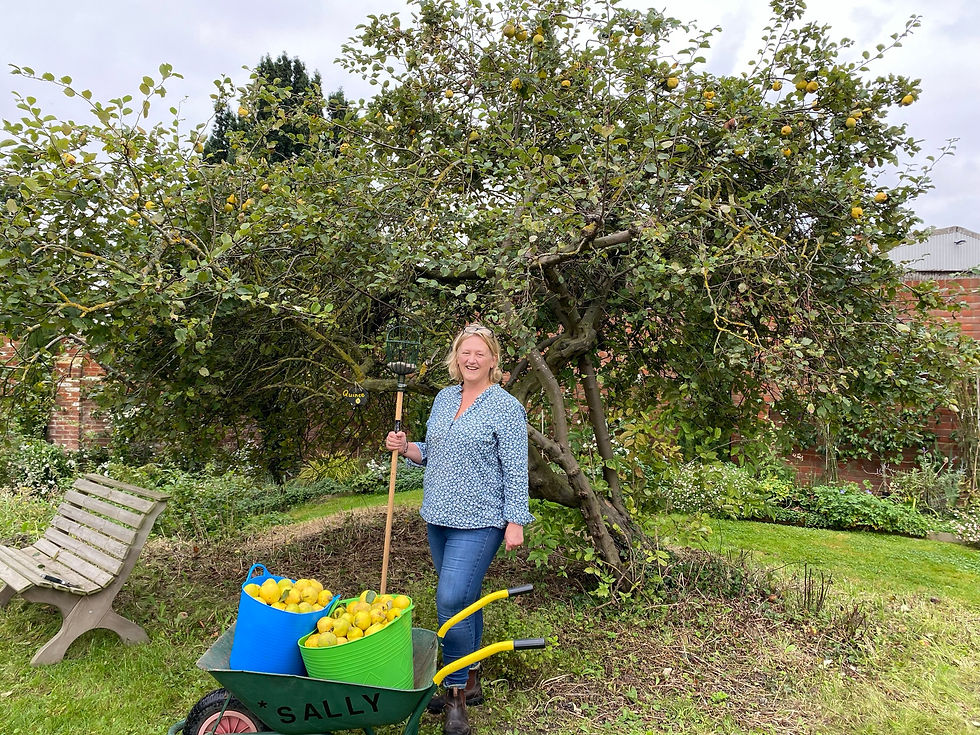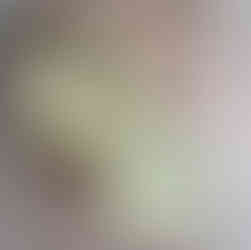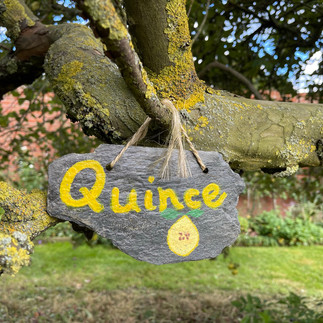Slices of Quince
- sallylouiseedge
- Oct 11, 2022
- 3 min read
"They dined on mince, and slices of quince, which they ate with a runcible spoon..." (Edward Lear, The Owl and the Pussycat)
What is quince?

In the eastern corner of the garden, near the old granary where we hold our workshops, are two old quince trees. Many people have never seen a quince, and are puzzled when they see the fruit, wondering what it is. The fruit looks like a cross between an apple and a pear, but are in fact in a distinct genus of their own, Cydonia - their full Latin name is Cydonia oblonga.

Can you eat quince?
Quinces are edible, but unlike apples and pears, they cannot be eaten raw. I've tried it and it's horrible - hard, grainy and bitter. They need to be cooked to tease out their beautiful flavour.
I'm not a fan of spending hours preparing fruit, so I usually go for a simple option. I peel and cut the quince into pieces and then poach for about 40 minutes with sugar and lemon juice. The quince becomes tender and syrupy - perfect for giving my cereals a seasonal zing or as a little pudding with ice cream.
The most famous way to cook quince, however, is membrillo, a quince paste of Portuguese origin, traditionally served with cheese. I am excited to try the membrillo that our local sustainable caterer, Wasted Kitchen, are going to make with a bag of my quince that they'll be collecting from me tomorrow.

Why does quince turn pink when it's cooked?
A fun thing about quince is that when cooked it goes from bland pale yellow to a lovely peachy pink colour. I found this excellent article today which explains that both the hard texture and the lack of colour in raw quince is because of the tannins in the fruit - this also accounts for the bitter taste. Quince's colour is there, it's just locked up by the tannins - break down the tannins by cooking and the red pigments (the same chemicals that make strawberries and tomatoes red) are released - dadaaaaahh!
Quince colour before and after cooking
And just look at the quince tree's exquisite bark! I think it's trying to tell us something about the colourful secrets locked inside its fruit.

What causes the brown skin and white spots on some of the fruit?
These are old trees, and it is only in the last year or so that we have been able to start to clear around them and prune them back to improve their health a little. They have certainly enjoyed the attention and are giving more fruit year on year. However, some of the fruit are succumbing to disease before we can get to them. Brown skins, black spots and white pustules on the outside, and when you cut them open, brown and rotten inside. This is caused by a fungal disease called 'brown rot' (Monilinia laxa / Monilinia fructigena), and will keep infecting the fruit unless we can turn the tide by clearing away the infected leaves and fruit. We might...but then again, maybe we won't find time, and I think these trees may be meeting their destiny. Even in decline they are giving us more fruit than we can eat and look so beautiful. Perhaps we will plant a new quince tree at the other side of the garden and start the quince life cycle afresh.

From culinary inspiration to artistic...
At Langdon we run a range of workshops, and whether they be about gardening, art or mindfulness, they are all rooted in and inspired by the garden ecosystem. Our two quince trees flank the old granary where our workshops are based, and have been capturing eyes and imaginations in our recent creative workshops.

This photograph of our quince was taken by artist Clair Meyrick during a recent workshop. I love the drama of it - reminds me of a Dutch still life painting.

This fabulous photograph was captured by workshop participant, Liz Jeffery.
The pictures below were me experimenting at our recent workshop with Louise Allen - Exploring Meaning in Life's Transitions. It's not great art but still it was a fascinating process so I hope you'll forgive me sharing! We used found shapes and lines from the garden (pics 1 and 2), to create a set of symbols - an alphabet of sorts (pic 3), which we then used to create 'asemic poetry', or 'poetry without meaning' (pic 4). It was fascinating to witness how my mind quickly made connections and brought meaning to my symbols - I didn't seek the meanings but still they came, and I used them to create my poem - life, death, rebirth, sex, disease, journeying, carrying on, hope. The quince gave me it all!






























How interesting! And this really makes me want to give quince a try - perhaps with my granola and yoghurt in the mornings!